As a vegetarian, it's important to make sure you're getting all the nutrients your body…
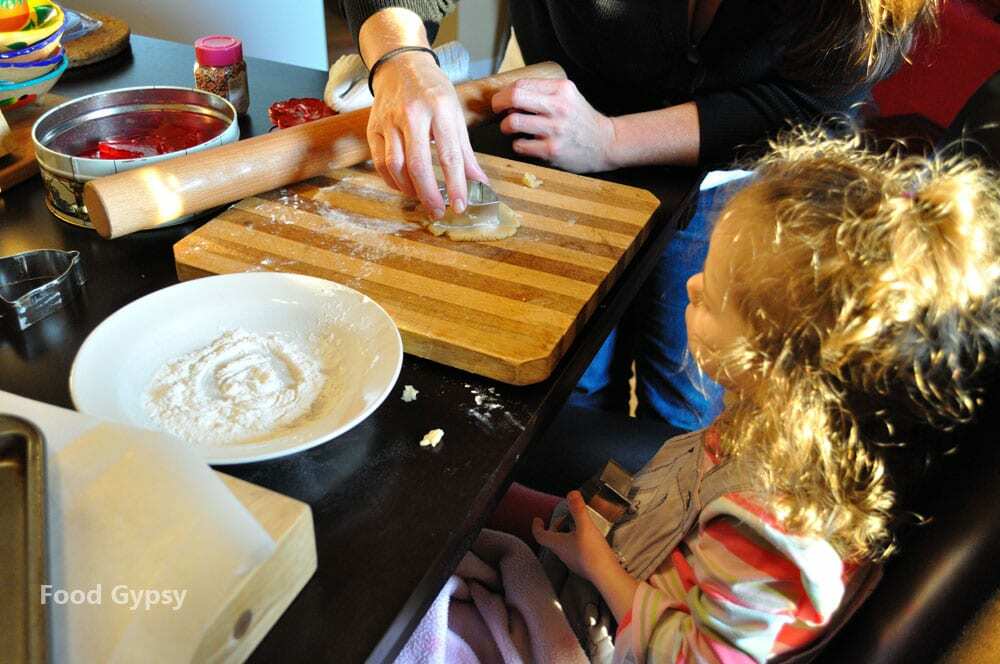
Cooking With Kids, Five Tips: From Safety to Sanity
Cooking with kids is fun. Messy, but fun! Here’s five tips to keep everyone safe and sane when your kitchen becomes a classroom for a lifetime of learning.
Kitchen literacy is as important as classroom literacy, if not more so. You may never use the calculus you learned in grade ten ever again, but you will eat; three times a day, every single day for the rest of your life.
Life Skills 101
Cooking teaches kids where food comes from, a respect for nature and reinforces math, basic science, creativity and healthy living. It’s a life skill. In our house cooking is as essential as learning to read. One feeds the mind, the other feeds the body, the mind and the soul.
We’ve been actively engaging the short person in the kitchen since she was two years old. (Oh, the toddler years!) Now the step-mom to a big, grown-up six year old girl, who’s gaining confidence stirring, sprinkling and cracking eggs, I look forward to bigger projects… and more mopping.
Here are a few tips to stay safe (and sane) when cooking with kids:
1. Safety first. Please, for the love of God, don’t give a five year-old a sharp knife or perch them beside the stove beside a big pot of boiling water unsupervised. This should go without saying, but it doesn’t so I’m just going to say it.
Roll up long sleeves when working around mixers & blenders, and take the time to explain what you’re doing, along with proper safety measures, as you go. Any time you involve the small fry it takes more time, so if you’re rushed ask kids to fetch, carry and measure (“can you get me the milk Sweetie and pour 1 cup into this bowl?“) rather than letting them get in harm’s way. You can learn just as much by observing in the kitchen as you can by engaging in the actual flipping and saucing.
2. Talk food. Turn their brains on and engage in conversation. Talk about ingredients, where they come from, how long it takes to cook and what spices or herbs do to the recipe you’re making. Share stories. Food is one part fuel and many parts narrative. If it’s a family recipe share it’s origin, or tell a tale of cooking when you were their age. Draw on the familiar, compare what you’re making to food they know already or textures they enjoy. Listen to what they have to say/ask. A question you can’t answer becomes something you have to look up later and a point of learning for everyone.
3. Let kids smell, touch and taste. As a kid, one of the great rewards for helping in the kitchen was the fact that I go to taste EVERYTHING. Licking the spoon, dipping my fingers in batter, eating too much cookie dough; this is the stuff childhood memories are made of.
Frequent exposure in small amounts also helps children to experience new tastes and get them talking to help build a sensory vocabulary. Is it salty? Is it sweet? Is it crunchy? One of my favorite questions to ask is “what do you taste?” or “what do you like about it?” This shifts mindset into the positive enjoyment of the experience rather than the typical grimace and “I don’t like it”. What don’t you like, do you even know?
For the last two years my favorite six year old used “salty” as a description for everything she didn’t like. Turns out that was just one of four words she knew to articulate flavour – everything was either sweet, salty, sour or spicy – but she hardly knew one from the other. Giving her more words gave her more ways to experience what she was being introduced to.
4. Let go of your inner neat freak. This applies particularly to younger children, who will spill things and get flour – like – e v e r y w e r e. Roll with it. Do your best to plan ahead. Break eggs over the sink the first couple of times, lay out an old table cloth so you can scoop it up all at once, and shake outside if necessary.
Instead of ruining school clothes slip them into an old t-shirt that really doesn’t matter if it gets splattered with beet juice, or pick up an over-sized shirt at the thrift store that they can slip over top of what they’re wearing. OK, so yea, the chef in my life was ordering new gear, saw this a mini chef’s coat (and matching hat!) and HAD to have it. Adorable? Yes. Extreme? Perhaps, but food is our business and, as it turns out this was a practical buy. This is her third year of use, she wears it whenever we’re seriously cooking together. She just slips it on and away we go. Chocolate on the sleeve? No biggie.
Kids should have a certain amount of leeway to get dirty as they learn.
5. Kids help make the mess, they help clean it up. The kitchen is not a war zone, once the cookies are in the oven ingredients go away, dishes get done, surfaces get whipped down and order is resorted. Delegate age appropriate chores; kids five and up can help load the dishwasher and put things away at the very least.
Growing up, the kitchen had to be spotless before the bowl and beaters were licked. This reinforces respect for how much goes into the meals they eat and the effort needed to keep the family home neat and clean.
If they have to help clean it up themselves next time it won’t be as bad. Once kids learn the kitchen rules, they’ll never forget them. They might ignore them… but they won’t forget them.
The family that cooks together, eats well!


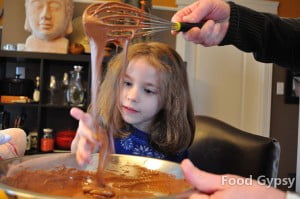
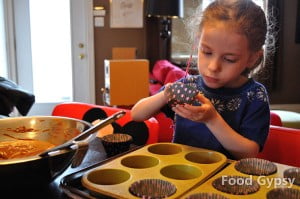
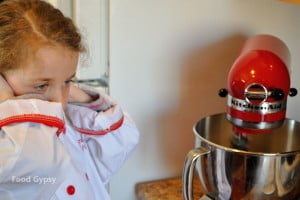
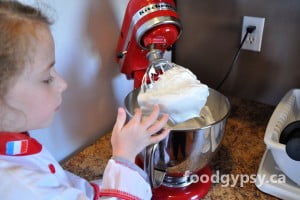
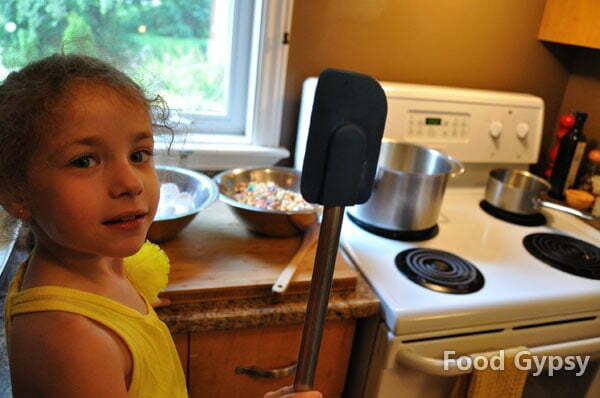

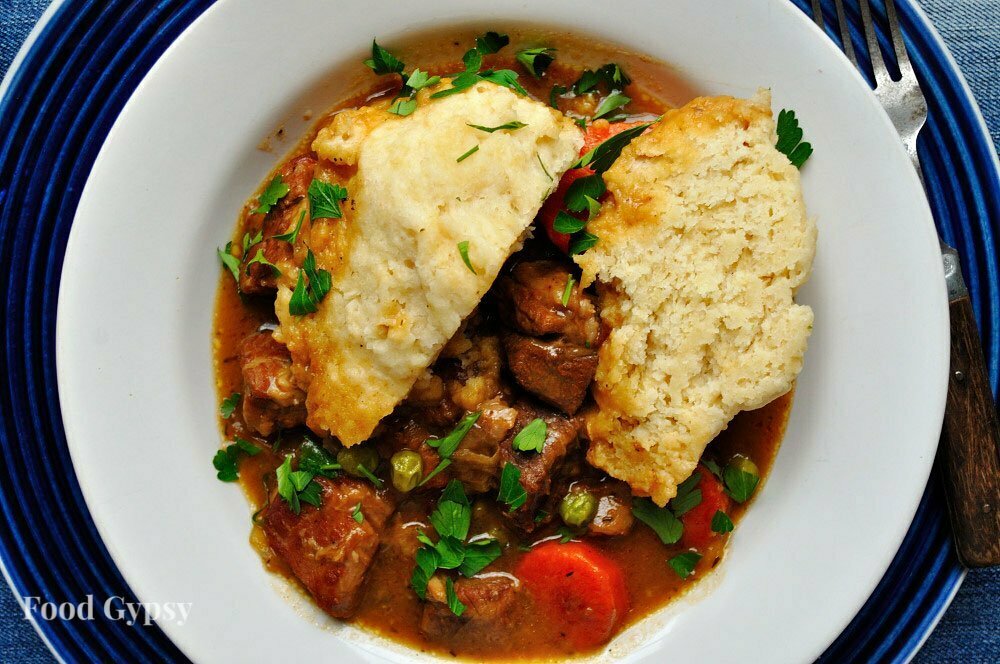
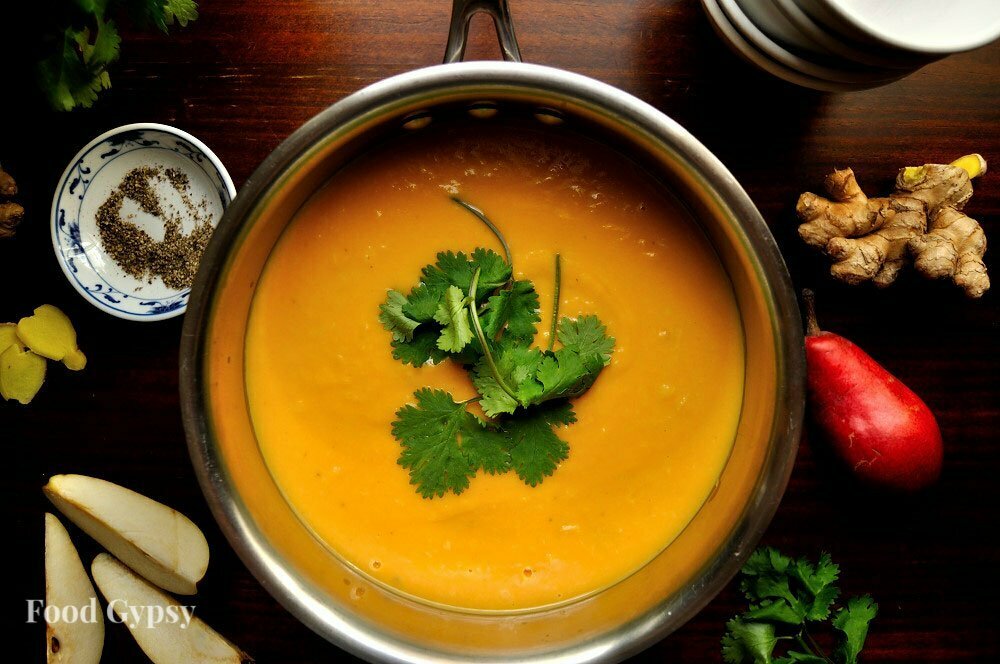
Food Blog – Cooking With Kids, Five Tips: From Safety to Sanity: Cooking with kids is fun. Messy, but fun! H… http://t.co/kwjnqWZtLR
RT @thefoodgypsy: Post: Cooking With Kids, Five Tips: From Safety to Sanity: Cooking with kids is fun. Messy, but fun! http://t.co/UxfJ…